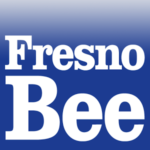Working with The Fresno Bee, owned by The McClatchy Company, and the NEWSCo/Lab at Arizona State University, we designed and are managing Crossing the Line (with City Hall reporter Brianna Calix). This project, which began in the fall of 2018, brings residents of North and South Fresno, long divided by measures including income and race and ethnicity, into a conversation to discover points of understanding and common ground in what one Fresno mayor dubbed “A Tale of Two Cities.”
Reporting “Fresno’s Divide” Wraps Up With Open Community Conversations
There’s a divide in Fresno. The north part of the city – the area above Shaw Avenue — has more parks, better schools. And the meat rendering plant? It’s in Southwest Fresno.
Residents want to talk about Fresno’s divide and they want everyone to have a voice
Nearly 75 percent of the people who currently live in the city of Fresno are not white, estimates from the U.S. Census Bureau show.
For these residents, Fresno’s north-south divide was learned in school
When Felipe Arballo was in middle school planning his high school future, he and his mother decided he should go to Bullard High instead of Fresno High, where most of his neighbors attended.
Poll: Fresno’s north-south divide is real and rooted in racism, income inequality
Fresnans who responded to a poll in a Bee story earlier this month pinned the city’s divide on systemic racism and income inequality.
Let’s talk about Fresno’s divide
Fresno’s divide is not a new concept.
Former Mayor Alan Autry famously dubbed the issue Fresno’s “Tale of Two Cities.” Since its birth, Fresno, like cities across the nation, was divided racially and economically along the railroad tracks.

